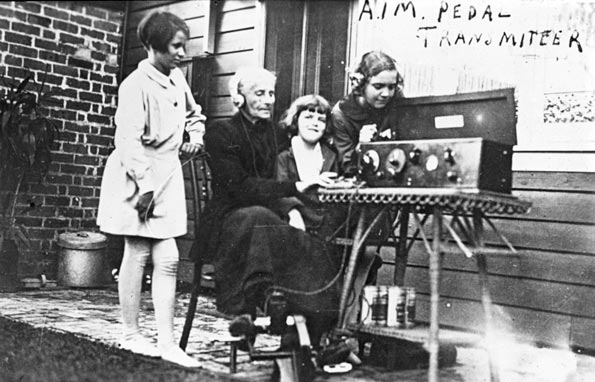 Using a pedal wireless transmitter
Using a pedal wireless transmitter
TLF ID R3174
This is a photograph, possibly taken by John Flynn (1880-1951) and measuring 8.2 cm x 8.2 cm, of an elderly woman seated at a pedal wireless transmitter with three girls behind her. There is no microphone but the woman is operating a morse key. The woman and one of the girls are wearing earphones. The words 'AIM Pedal Transmitter' are written in black in the top right-hand corner.
